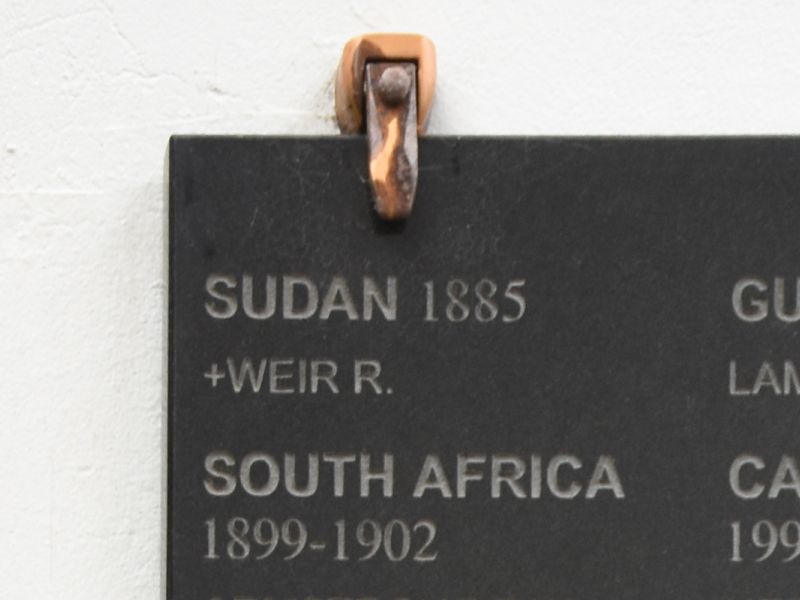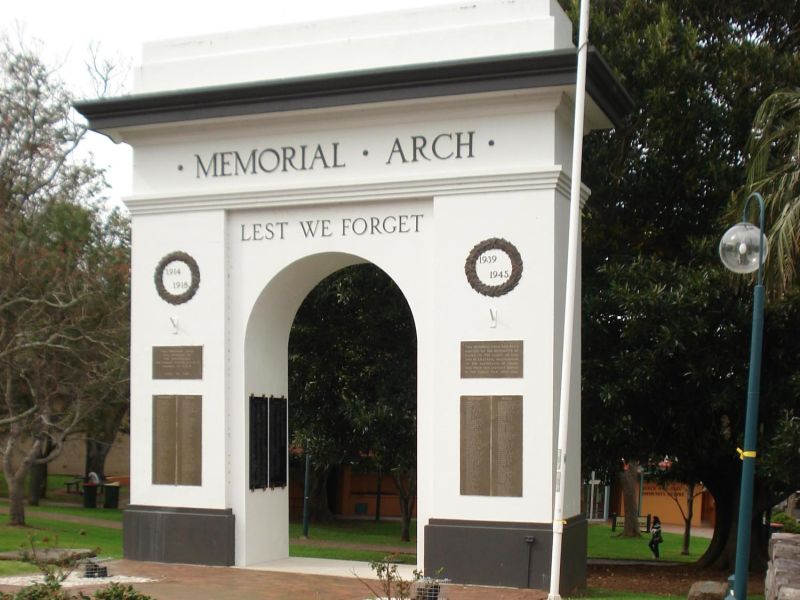The First of Many
Inside the arch of the Kiama Memorial Arch, four panels bear the names of local citizens who have served Australia in times of war and conflict other than the First World War. The list of conflicts begins with a single name under ‘Sudan’. The small cross beside his name indicates that Robert Weir did not return home.
Twenty-two-year-old Robert Weir, from Gerringong, near Kiama, NSW, had volunteered to be part of the New South Wales Infantry Contingent raised in February 1885 to assist British forces in the Sudan, after the death of British General Charles Gordon. Gordon’s force had been besieged in the city of Khartoum by rebellious followers of Muhammed Ahmed, known to the faithful as the Mahdi.
Although the NSW Government offered to meet the contingent's expenses, the British accepted only after stipulating that the contingent would be under British command. They declined offers for similar contingents from the other Australian colonies. It was the first time that troops had ventured from Australia as soldiers of a self-governing Australian colony, ready to fight in an imperial war.
The NSW contingent arrived at Suakin, Sudan's Red Sea port, in late March 1885 and were attached to a brigade of British troops. Shortly after, they marched as part of a large formation for Tamai, a village some 30 kilometres inland. Although on this march the men were only engaged in minor skirmishing, the reality of war was driven home when they encountered the dead from a previous battle, eleven days earlier. Eventually the formation reached Tamai, burned whatever huts were standing, and returned to Suakin. During this expedition the Australians sustained only three casualties, none fatal.
After Tamai, the Australians did little more than guard duties and railway construction. It was far from what they’d imagined they’d be doing. Briefly, a camel unit was raised and quickly attracted about 50 volunteers. It conducted only two sorties however, one of which was to bury the dead they’d found on the march to Tamai.
As they had not participated in any battles, the Australians had few battle casualties and no deaths. It was disease that claimed the lives of those who fell. The first of the nine men of the contingent to die was Private Robert Weir, who died from dysentery aboard the ship ‘Ganges’ on the morning of the 1st of May 1885. He was buried late that afternoon, with a firing party from the Coldstream Guards providing military honours. Later that month the British government decided to abandon the campaign and the Australian contingent sailed for home on the 17th of May.
Robert Weir was the first Australian to die on active duty overseas. His name on the Australian War Memorial Roll of Honour has now been joined by almost 103,000 others, all embossed on the bronze panels lining the cloisters area. The Roll covers the conflicts and operational service from that tentative colonial beginning to the current day, but Private Robert Weir remains the first of many so recorded.
- Australian War Memorial https://www.awm.gov.au/articles/atwar/sudan

 Henry C Moulds
Henry C Moulds